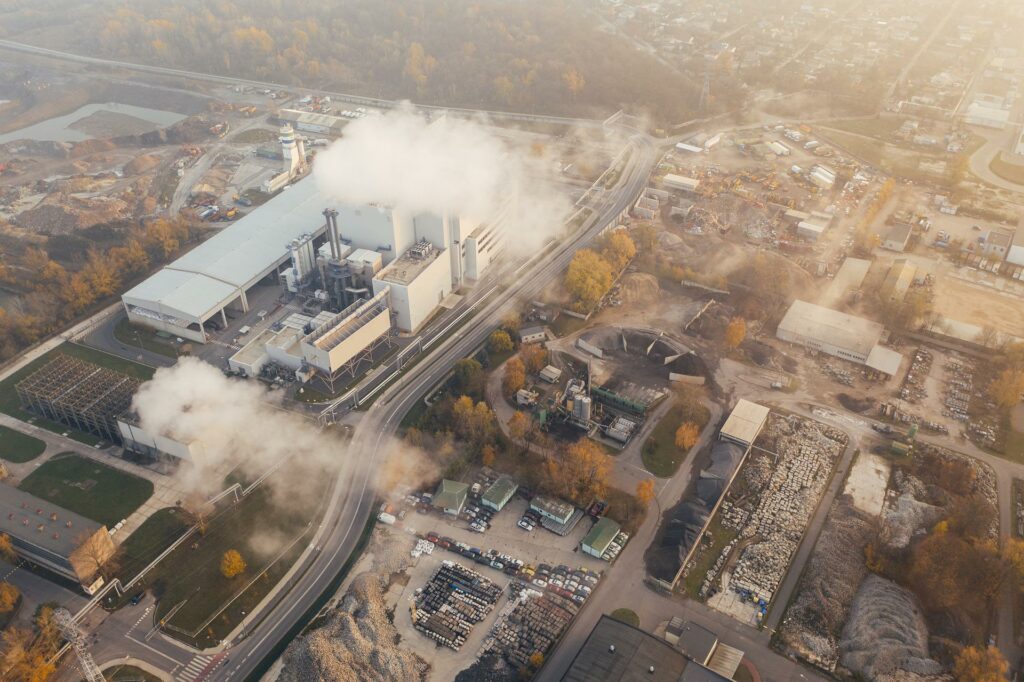10 Ways You Can Help Fight Carbon Emission
The world is getting warmer. As a result of carbon emission, we have seen an increase in the sea levels, extreme weather events are also getting quite common, and droughts have ruined food crops significantly. Global warming has led to severe droughts, intense floods, widespread wildfires, and uncontrollable storms. All these factors have put immense pressure on the climate and our planet.
Antonio Guterres has said in an interview that with global warming and sea levels rising at such a rapid pace, it has become important, more now than ever, to take some action. While the current stats seem pretty depressing, it doesn’t mean we can’t do anything to protect our environment. As individuals, it’s our responsibility to contribute to the planet by taking every small step that reduces our carbon footprint.
If we want to reach net-zero carbon emission in the next 30 years, everyone needs to participate. The question is, what can we do to fight the climate crisis? Let’s check out the 10 easy ways you can help fight the climate crisis.

Use Energy-Efficient Appliances That Doesn’t Cause Emission
How you use electricity plays an integral part in determining your carbon footprint. By using less energy, you don’t only contribute to this planet but save money in the long run. Electricity is produced by fossil fuel, oil, gas, and other limited resources that are depleting rapidly. So, where do you start? Switching to a renewable source of energy is the perfect place to start. Solar panels, for example, eliminate the need for an electrical grid altogether. With these panels on your rooftop, you no longer need to pay the electricity provider.
A few simple steps like switching off the electrical appliances when you aren’t using them or buying energy-efficient appliances to reduce your electricity consumption can result in savings in the long run. It’s equally important to take care of insulation, as insulating your roof and the wall will keep your house warmer in the winter and cool in summer. Your electricity usage affects your carbon footprint a lot. So, make sure you use electricity wisely.
Consider Your Transportations Emission
Around one-quarter of the greenhouse gas emissions occur due to transport. While the government is introducing the best measures to reduce carbon emissions from transport, individuals can also play a role here. Your choice of transport has a significant impact on the environment.
Instead of driving by car every day, choose public transport. Walk or cycle to work. Not only will it protect the environment, but it will help you achieve your weight management goals. Plus, you can save a lot of money on the commute. If there is a lot of distance between your office and home, choose electric vehicles. If the destination requires traveling by car, drive with others so that there are fewer vehicles. Avoid taking flights to places within your country.
Buy Sustainable Products
Sustainable products are designed to last for years and require minimal energy for production. They are made of natural products. You should consider buying local and seasonal products to help local farmers and reduce your carbon footprint. By buying locally, you reduce pollution and greenhouse gas emissions from the vehicles used for importing these products from international countries. Take a step further by growing your own fruits and vegetables in your backyard, or you can build a community garden where you involve people in your neighborhood.

Do Not Waste Food
The Food Waste Index Report of 2021 shows that 8-10 percent of the carbon emission occurs because of food wastage. Approx 1 billion tonnes of food is wasted annually. We can’t do anything about the food wasted during manufacturing or transportation. But, a few effective steps like buying only what you need or using every part of the edible item can reduce your food wastage. Cook portion-controlled meals. Avoid meat-based meals and switch to green vegetables and other locally grown foods. Store your food in a freezer so you can use leftovers the next day. You could make compost of the inedible products and use it for fertilizing the lawn. It will help you manage the organic waste, thus reducing your carbon footprint.
Dress Smart
The fashion industry contributes to 8-10 percent of the carbon emission annually, which is more than the pollution caused by air and water shipping combined. Sadly, a considerable amount of these cloth wastes end up in landfills, becoming one of the biggest contributors to carbon emissions. In order to reduce your carbon emission from clothing choices, consider switching to sustainable clothes. Buy fewer clothes and from sustainable brands. For special occasions that require heavy clothing, consider renting them instead of buying expensive outfits. Buying clothes that will end up in the landfill after wearing them once doesn’t make any sense.
Plant More and More Trees
Deforestation accounts for up to 25% of the global carbon emission. While it isn’t possible to avoid it altogether, everyone can play a part here by taking simple steps, like planting more and more trees. You can do that by planting trees individually or in a group. Join your community that focuses on planting trees every week or taking other essential steps for reducing carbon emissions from deforestation. As mentioned before, you can build a backyard with fruit and vegetable trees. Not only does it give you a chance to eat local and fresh food, but it can reduce your carbon footprint significantly.
Reduce Plastic Use
Nothing harms the environment as much as plastic. Plastic doesn’t decompose for decades. In fact, the plastic waste that you throw in the landfill takes more than a hundred years to decompose completely. As an individual, you can make many lifestyle changes to reduce your plastic usage. For example, avoid plastic water bottles. Bring your own bottles and re-fill them with tap water. Take cloth and paper bags to the grocery stores. Do not use plastic plates and cups when serving food. The one-time-use plastic can cause significant damage to the environment, as it goes straight to the landfill after a single-use.
Buy Only What You Need
Impulsive shopping is about making unplanned purchases or buying things you may not need in a few months. The best example is fashion products. As mentioned before, people have a habit of buying fashionable items that are in trend, only to wear them a couple of times and throw them in the trash. Likewise, buying excess food that you won’t need and throwing them away might not look like something that will make a difference to the environment, but it will increase the volume of waste ending up in the landfill, causing a significant impact on Earth. You should buy what you need and try to reuse it as much as possible.
Before throwing things into the trash, see if they can be recycled. A vast majority of the products you throw in the trash can be easily recycled. Divide products into three categories — reuse, recycle and donate. You could also resell items that are in good condition. Your old pair of jeans or clothes that do not fit you anymore can be donated. Find a charity and see if they accept old clothes and fashion products. You will most likely find people who will gladly pay you half the purchase price of the product.

Be Politically Active
Being politically active isn’t about taking part in the debate, although that is one effective way to make a difference. It’s more about voting for the leaders who take our environment and the factors causing the climate crisis seriously. The government and political leaders will implement steps that can bring the levels of global carbon emission down rapidly. You should also tell your friends and neighbors that you are voting for a leader who takes climate seriously.
Spread Awareness
As an individual, you might be doing everything you can to reduce greenhouse gas emissions. But is that enough? Programs like Count Us In inspire billions of people to practice eco-friendly and sustainable living. It covers small challenges that help you go green and adapt to a sustainable lifestyle. Developers of this program have said that if they can get 1 billion people to participate and take the desired action, they can reduce up to 20% of the global greenhouse gas emission. There are many such campaigns that promote sustainable lifestyles and practices to fight climate change. Educate your friends and neighbors about small things that can increase their carbon footprint and the impact it has on our environment.
Bottom Line
You don’t have to spend hundreds of thousands of dollars on making this world eco-friendly. Small practices listed above play a significant role in keeping the atmosphere fresh and protecting the environment from greenhouse gas emissions. Not to mention, it will help you fight the climate crisis. These were only to name a few. There are plenty of ways you can reduce your carbon footprint and go green. So, what are you waiting for? Embrace a healthy and sustainable lifestyle and make a contribution to this environment.


Responses